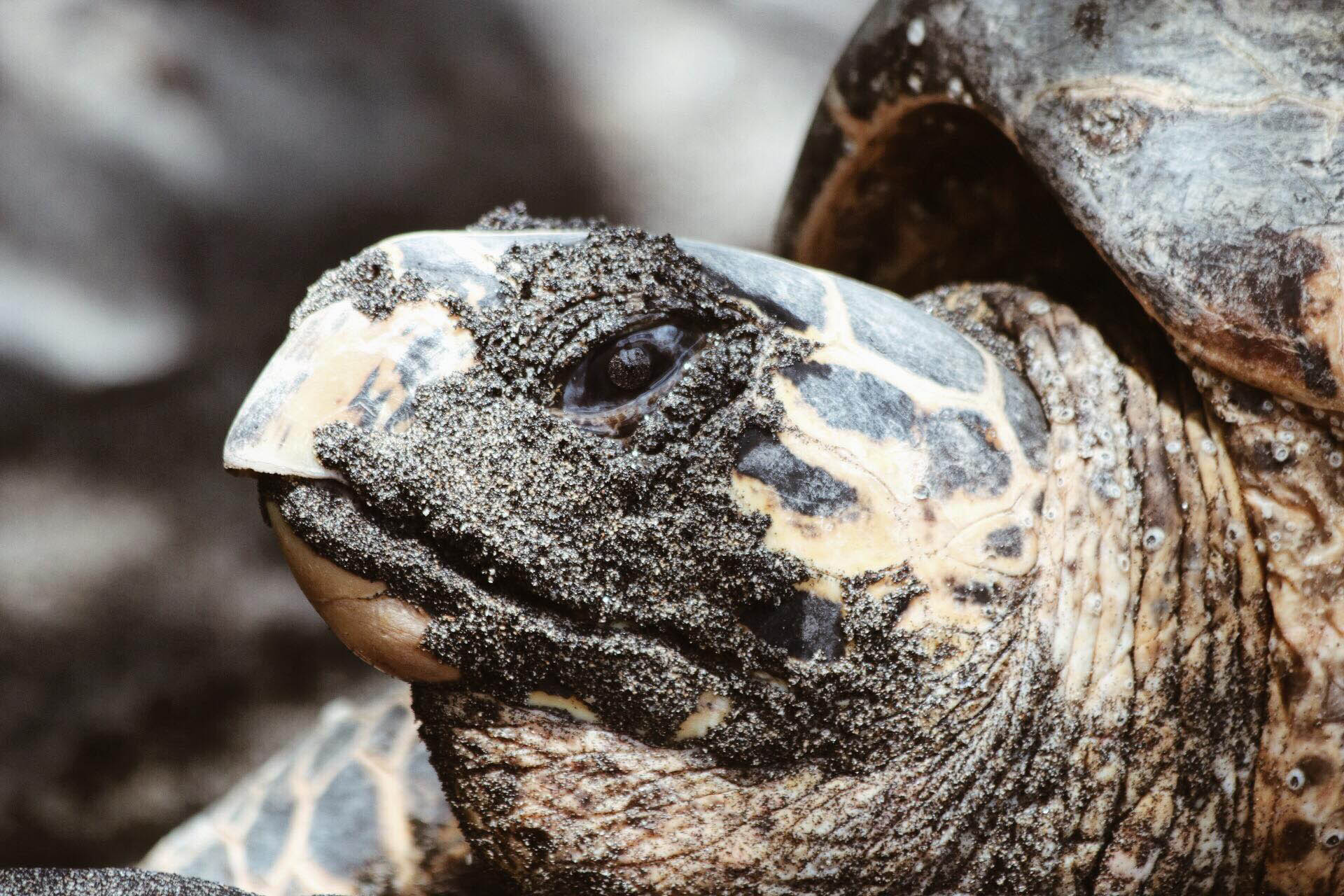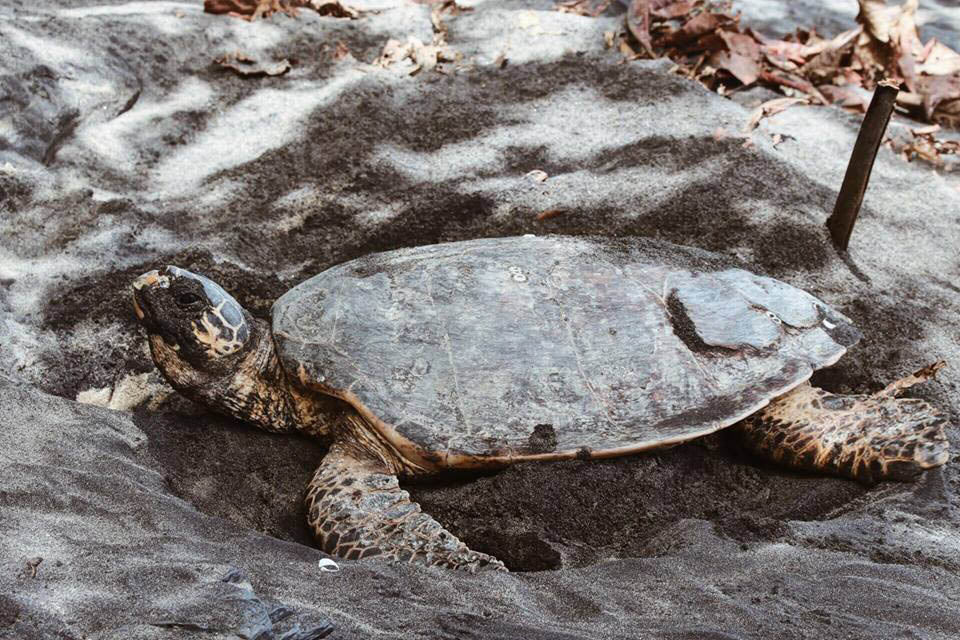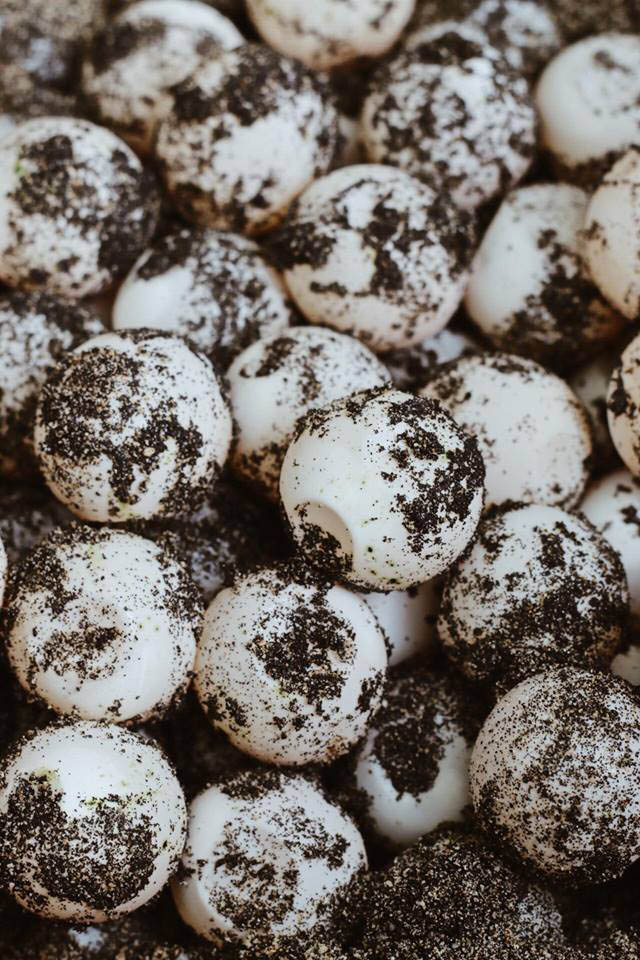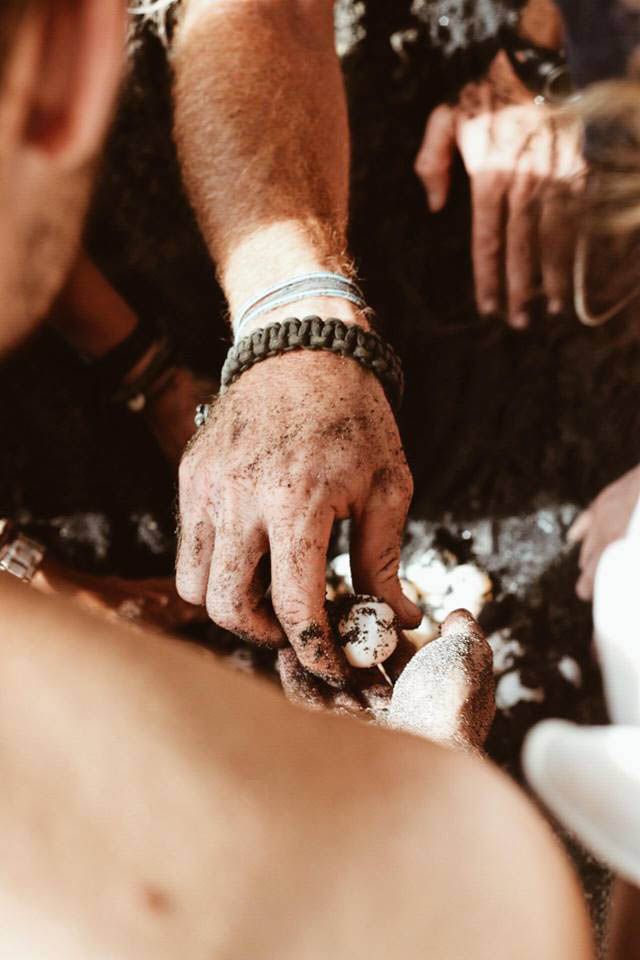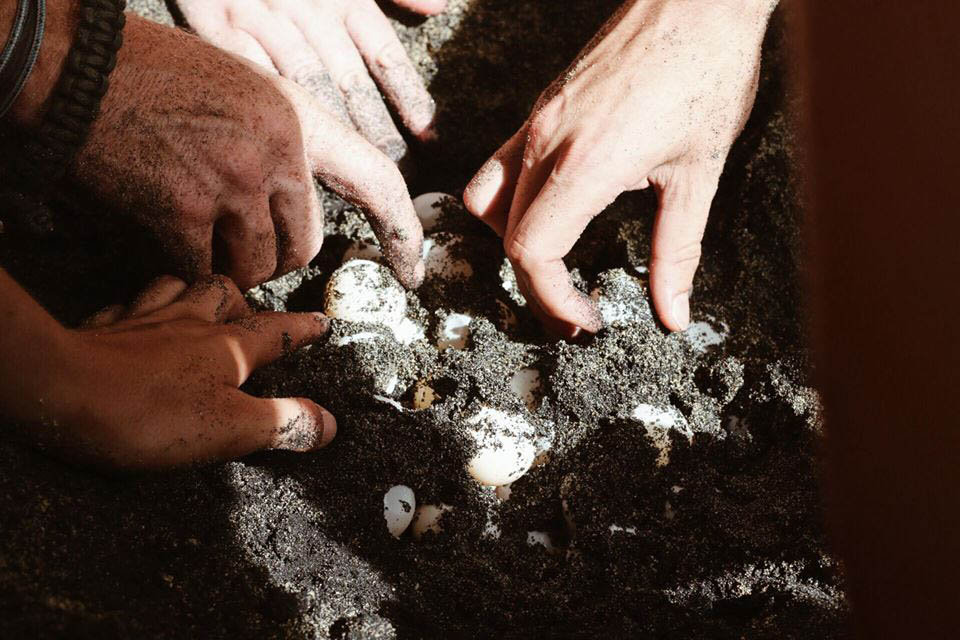Help ensure the survival
of endangered sea turtles
Get up close to these beautiful creatures in Madagascar
-
Duration
1-12 Weeks -
Minimum age
17+ -
Start dates
1st & 3rd Sunday -
From
$420
-
Duration
1-12 Weeks -
Minimum age
17+ -
Start dates
1st & 3rd Sunday -
From
$420
Madagascar Sea Turtle Conservation
Quicklinks
Assist in identifying popular nesting areas along remote and picturesque beaches in Madagascar and it's surrounding islands. This programme gives you the opportunity to get up close to these beautiful creatures whilst helping to ensure the health and survival of the species into the future.
To this day, many turtles are being harvested for the souvenir trade and large numbers of turtle eggs are being plundered - having a devastating impact on turtle population numbers in the area. After receiving in-depth training upon arrival, you will be a part of creating a new research database in a relatively unstudied area. You will be out searching for signs of turtle activities most days and nights and you will play an important role in conserving sea turtles in Africa.
Built into the steep, rocky slopes of Nosy Komba, the accommodation overlooks the spectacular coral reef below. Surrounded by lush green forests a stone’s throw away from a picturesque white sandy beach, you can enjoy stunning views out across the ocean - this really is paradise. It won't all be work though and you will have plenty of time to relax on the beach, go snorkelling in search of sea turtles, hike through the forests in search of lemurs, go whale watching and so much more.
Background to the Sea Turtle Conservation programme
The sea turtle conservation programme in Madagascar has been established to identify and develop safe turtle breeding zones along the Northern coastline. Currently two species of turtles are monitored, the critically endangered Hawksbill and the endangered Green Sea Turtle.
Still to this day, large numbers of turtle eggs are being plundered on many of the remote beaches around Madagascar and its surrounding islands. On top of this, hatchlings and fully reproductive turtles are being harvested for the souvenir trade, having a devastating impact.
Sadly, both species have seen a significant decline in population numbers. Hawksbill turtle numbers have fallen by as much as 80% in the last 10 years and the annual number of nesting female Green Sea Turtle species has declined by up to 67% over the last 3 generations. This has left both species at high risk of extinction if nothing is done to safeguard their future.
With the help of the local community and international volunteers like yourself, research is being carried out to identify key threats and measures are being implemented to try and protect these important breeding sites – paramount to safeguarding the species in this area. With the collaborative effort of volunteers, the local team will continue to strive to protect endangered sea turtle species in their natural habitat as well as to promote public awareness by further collaborating with local communities and national authorities.
Where will I be volunteering?
Established in 2013, the local team is a non-profit government approved organisation that was set up to assist the Madagascar Department of Education with their research supporting the conservation of the environment around the island.
Through long term monitoring and species-specific projects in collaboration with a range of international partners, the team undertake environmental research, community development and provide education to the local communities.
The sea turtle programme aims to:
- map and identify beaches used as nesting sites.
- identify species diversity and numbers.
- engage and establish a relationship with the local communities enabling us to include them in our conservation efforts.
- monitor and remove plastic waste and other harmful products from the beaches.
The main research base is located on Nosy Komba (also known as Lemur Island or Nosy Ambariovato), which is situated within the Mozambique Channel. The island is surrounded by white sand beaches, mangroves and seagrass beds leading to a fringing coral reef. The coral reef opposite the volunteer accommodation has been established as a no-take marine protected area since 2016 and provides a fascinating, diverse habitat and feeding grounds for a whole host of marine biota. These range from groupers, turtles, dolphins, nudibranchs and stingrays.
On top of this, the programme aims to spend some time on an adhoc basis in Ampoagna to carry out surveys there and at the surrounding beaches. This small remote village sits on a long white sandy beach and is surrounded by lush green forests with rivers that are lined with mangroves at either end.
What is my role?
Your main role will be to assist in identifying nesting areas by visiting remote beaches on islands surrounding the island of Nosy Be. This program gives volunteers the opportunity to get up close to these beautiful creatures whilst helping to ensure the health and survival of the species into the future.
The Sea Turtle Monitoring Programme runs year round with the focus of the programme shifting depending on the season. During the nesting season from October to March each year when turtles come ashore to lay their eggs, the project focuses on preventing the poaching of mothers and nests, collecting data on the nesting turtles and their eggs as well as moving nests that have been laid in locations that are unsuitable for hatching success. During the dry season from April to September, the programme focuses on collecting ID and behavioural data on turtles in the water, rehabilitating nesting beaches and educating local communities on the importance of turtles in the ecosystem.
Research will primarily focus on the Green and Hawksbill turtles, with data also being collected on the less common Olive Ridley and Loggerhead turtles if encountered. All data collected will allow a better understanding into the current state of the turtle populations of Madagascar and is vital to assist in the protection and management of these populations.
You will be part of creating a new research database in a relatively unstudied area. You will be out searching for signs of turtle activities most days and many nights. If you find turtles or eggs during the surveys, you will also get the opportunity to handle these animals as part of the data collection process.
Morning Track Counts - The nesting beaches of Madagascar span a large distance and the turtles come ashore at night to lay their eggs. This means that we are not always able to do live counts. Instead, we walk the beach in the morning looking for signs of turtles such as tracks from females coming ashore, evidence of nests and tracks from hatchlings heading to the water. These tracks can be used to determine the species and number of turtles that nested on that beach recently.
Night Surveys - We will also be conducting live counts. This will mean late nights of patrolling the beaches to look for turtles coming ashore or hatchlings emerging from their nests. This will allow us to record large amounts of data on the nesting turtles such as number, size, condition and species etc.
Turtle Surveys - To estimate the actual population size of feeding populations we carry out active turtle surveys (ATS). By snorkelling out and collecting individual identifications of turtles in an area we are able to observe those we are frequently and can therefore determine an approximate population size. ATS’s are a frequent activity but if you are uncomfortable snorkelling, alternative activities can be organised.
Turtle Watch - To identify areas of turtle activity we carry out turtle watch from land. Over a 30 minute period you will watch the designated area for surfacing turtles as well as any other interesting activity (such as boats passing or mooring).
Seagrass Survey - Seagrass is a vital part of the marine ecosystem as well as the main diet for green sea turtles. Along with the marine conservation team we carry out seagrass surveys when experiencing extremely low spring tides. This allows us to assess the overall health of the seagrass through species abundance and richness as well as if there are signs of turtles feeding.
Beach Cleans - As previously mentioned, this area of Madagascar has no recycling or waste disposal facilities which unfortunately leads to a lot of waste finding its way into the ocean and onto our beaches. Other than the general desire to keep our oceans and beaches clean, we have the added pressure of the way sea turtle digestive tracts are designed. Their oesophagus is lined with spikes to help push the food into their stomach and prevent them from regurgitating their meal. Unfortunately, this means that once a turtle has started to eat a piece of plastic they are unable to stop, leading to some turtles consuming large masses of plastic and other waste. Therefore, we conduct frequent beach cleans collecting waste both on Nosy Komba and at Ampoagna.
Community Engagement - The future of Madagascar’s turtles ultimately depends on the people who live here. We are involved in teaching the local community about environmental issues both on a local and global scale. We strive to engage with the local people and provide education about protecting their environment. We are always looking for new ways to inspire people to conserve wildlife that share the island. You may get the opportunity to teach classes, assist in construction projects and partake in forest hikes.
This programme can be challenging at times but is a very rewarding experience! During your first week you will receive your orientation and species introductions as well as training on survey methods.
What will a typical day look like?
You will generally be volunteering from Monday to Friday with activities dependent on the turtle nesting season. During the nesting season (October to March), the majority of sea turtle activity actually happens during the late evening/night and in the early mornings. For this reason, most activities generally occur during this time, leaving you with plenty of free time during the day to relax or assist with other programmes.
Outside of the nesting season, most activities will occur during the day and will still focus on collecting vital research and being around sea turtles.
A typical day during the nesting season (October to March) -
07:00am - Breakfast at the camp
08:00am - Morning track counts
12:00pm - Lunch at the camp
13:00pm - Data entry, teaching, construction or rest
18:00pm - Dinner
20:00pm - Night surveys
A typical day outside of the nesting season -
07:00am - Breakfast at the camp
08:00am - Start of morning activities
12:00pm - Lunch at the camp
13:00pm - Start of afternoon activities
18:00pm - Dinner
18:45pm - Briefing to discuss the tasks for the following day
You will have several hours of free time throughout the day and in the evening where you are more than welcome to relax on the beach, go snorkelling in search of turtles, enjoy the views from the dive deck or socialise at the accommodation playing games.
There are no volunteering activities planned for the weekends and this is your perfect chance to head off and explore more of Nosy Komba and the surrounding islands. There are so many things you can see and do including walking the narrow stretch of beach at Nosy Iranja, go lemur spotting at Lokobe National Park, climb Mont Passot to enjoy the 360 degree views, hop on a boat and go whale watching or simply relax and enjoy your surroundings.
Where will I be staying?
Built into the steep, rocky slopes of Nosy Komba, the eco-friendly volunteer accommodation is a multi-level compound overlooking the spectacular coral reef below. Surrounded by lush green forests a stone’s throw away from a picturesque white sandy beach, this really is paradise. You can relax and unwind on the large dive deck that is complete with hammocks, bean bags and benches, providing the perfect spot to enjoy the stunning views of the ocean that extends all the way to Lokobe Forest Reserve on Nosy Be. You will be staying in one of several locally built bungalows that are nestled within vibrant gardens and enjoy stunning views. Volunteers can expect to share a hut with four to six other volunteers in wooden bunkbeds.
When travelling to Ampoagna, you will be staying in basic hut style houses with your fellow volunteers. This small remote village sits on a long white sandy beach and is surrounded by lush green forests with rivers that are lined with mangroves at either end. With the waves crashing down in front of you and the lemurs calling out from behind, you're in for a treat!
Other things to consider
Working hours - As sea turtles are most active during the night, during the nesting season (October to March) most volunteering activities start in the early evening and continue well into the night. Please be prepared to work some "unsociable" hours.

